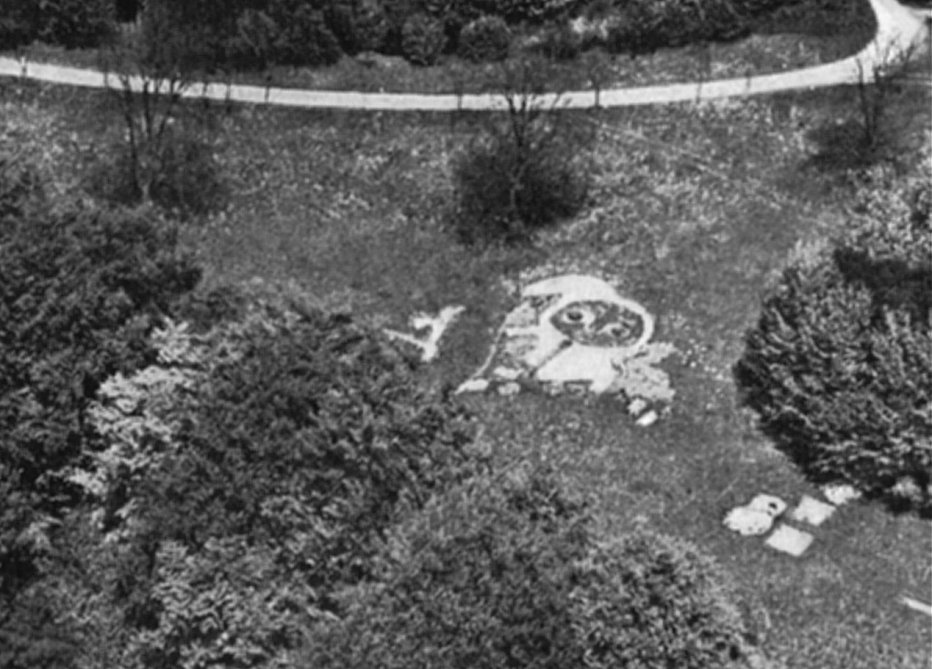
Aerial photograph of Lethbridge’s excavation taken in 1955. Cr. Cokaygne Press.
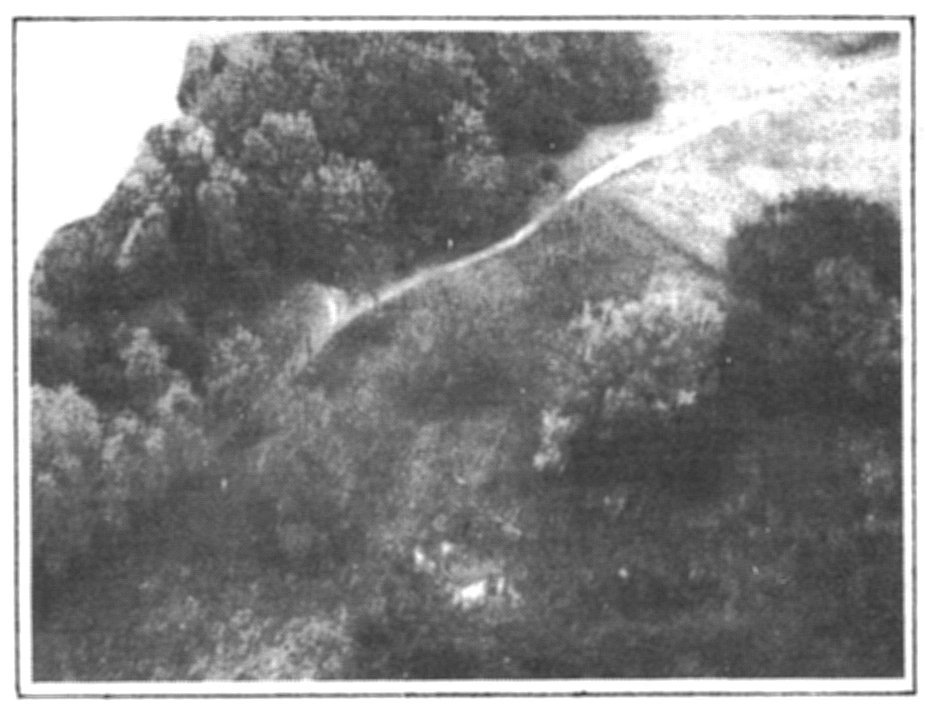
The site 27.1.78. Cr. Nigel Pennick.
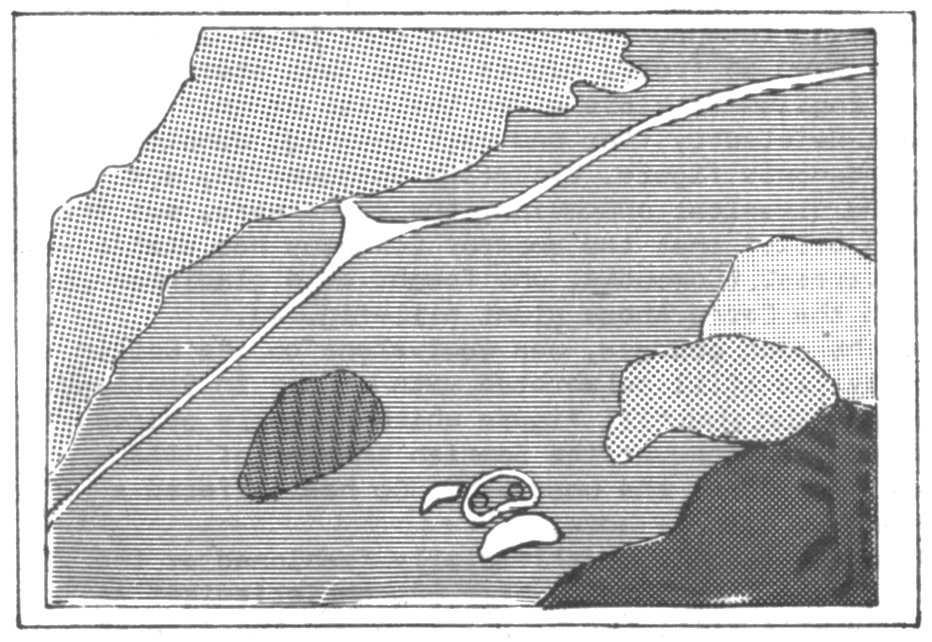
Drawing of aerial photo above for comparison. Gogmagog remains in lower foreground. Drawing by Nigel Pennick.
{1}
{2}{Blank}{3}
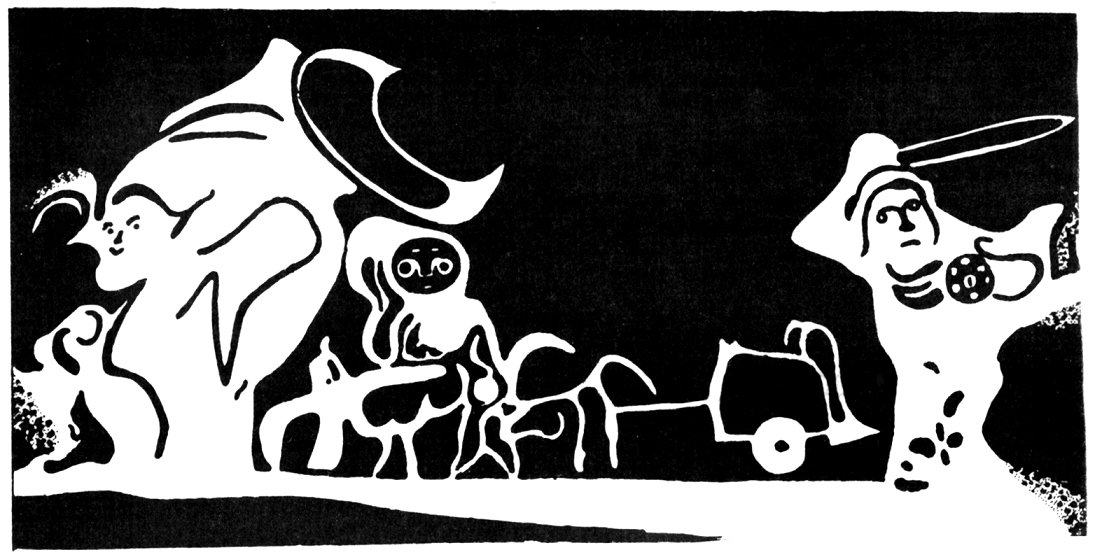
Four miles southeast of Cambridge is the enigmatic ancient earthwork of Wandlebury. Recently, the provenance of this circular earthwork: hillfort or astronomical observatory has become a bone of contention, but this is just another controversy which has been added to the existing one which is dealt with here: the Gogmagog Hill Figures. In his Otai Imperialia (c. 1211), the chronicler Gervase of Tilbury wrote of a tale at Wandlebury which was current in his day (he left England about 1177). If one went to the site by moonlight and shouted a challenge, a mysterious knight would emerge and engage in combat. A Norman baron, Osbert FitzHugh, on a visit to Cambridge, went to Wandlebury with his squire to test the veracity of the tale. The ghostly knight came out, fought Osbert FitzHugh on horseback, and lost. Osbert carried off his horse as booty, and displayed it in Cambridge. Like the knight, it was black with black trappings. At cockcrow it broke loose and disappeared. Later written accounts tell of a giant figure at Wandlebury, the latest being in an account by William Cole, who used to see it as a child in 1724 when driving between Babraham and Cambridge. Local tradition asserts that a single giant was visible from the nearby village of Sawston until the 1850s, and tales circulated until about that period as far afield as Royston. They died out, it seems, concurrently with the planting of a wide belt of beech trees halfway down the slopes of the hill on which Wandlebury is built.
The respected archaeologist T.C. Lethbridge was intrigued by these documentary records and the local folktales which referred to the lost figure on the Wandlebury hillside. As only two slopes at Wandlebury are visible from Sawston, Lethbridge decided that he would try and find if there were any traces of the ancient hill figure on either of them. One of the hills was Little Trees Hill, which has largely been quarried for chalk, and the other was the slope just below Wandlebury Camp, a slope which has much in common with that at Uffington Castle where the white horse survives to this day. In 1954, Lethbridge was given permission by the Cambridge Preservation Society, the owners of the site, to search for the lost figure on the hillside at Wandlebury. He checked the orientation of the slope, and found that only about 200 yards of the slope actually faced Sawston.
No archaeologist to whom Lethbridge mentioned his project believed that it was possible to recover the outlines of a lost hill figure. This was before he started work, and was the attitude taken all through the work, and, indeed, generally the attitude officially endorsed in 1979. Lethbridge agreed that if the technique was limited to the use of the spade, that would be the case. However, in chalk country, Lethbridge {4} made use of the old country method of using a bar, or probe, to look for the lost features. The pionser researcher into stone circles, C.W. Dymond, located many lost stones at various rings by means of the probe, and Lethbridge himself had previously located graves, earthworks and hut sites with his probe, which was a stainless steel bar, 5 ft. 9 inches in length and 5/8 of an inch thick, graduated in feet. Assuming that the surface of the chalk was reasonably level beneath the turf on the hillside, it seemed to Lethbridge that it should be possible not only to locate the figure, whose outlines would have weathered into the chalk over the centuries, but also to actually plot the outlines with some degree of accuracy without carrying out any digging at all. The method was the same as plotting the bottom of a harbour, and the survey was plotted by a tape triangulation of sticks marking the edges of all hollows. Lethbridge had estimated that his search would take only a few days, but eventually he probed for eight months, making an estimated 30 000 to 50 000 soundings, all marked by sticks as to their relative depths. Even as early as the placing of sticks in the holes, Lethbridge’s opponents were at it. Sometimes he would start a new day’s work to find that his previous day’s sticks had been wrenched from the ground by person or persons unknown.
After the probing, the plotting began, and Lethbridge was amazed to find revealed the outline of the figures illustrated on the previous page – not just one giant, but a whole pantheon! On the advice ‘of several learned archaeologists’, Lethbridge published the results of part of the survey in the Archaeological News Letter in order that he would not he accused of making the figures when the time came to excavate them. In 1955 excavation began. After a poor summer in which little work was accomplished, the autumn brought results which thoroughly vindicated Lethbridge’s probings. The central part of the figures, the Mother Goddess Magog, was excavated and found to be close to the pattern under the rod.
The results of the excavation were startling, and perhaps because of this, certain archaeologists started to come forward with those arguments so well known to geomantic researchers: chance, natural phenomena, fortuitous coincidence etc. Lethbridge wrote:
“There were not wanting numerous opinions that all outlines discovered and plotted were the work of frost action in glacial times, just as there were many opinions that it was impossible to find any outlines at all. Being a trained geologist myself and having made a special study of frost action in the arctic, I did not take these opinions too seriously. When excavated, the outlines were found to contain a grey clay sludge, compounded of humus and powdered chalk, which contains snail shells found under modern climatic conditions. There are also occasional fragments of pottery. … The outlines as found at Wandlebury, as local farmers, who saw them, assured me, are the product of the decay of the chalk and rainwash under modern conditions, which is seen everywhere in this district when the turf is removed. It is now forming again in such outlines as have been opened.”
Thus Lethbridge, an expert in glacial weathering, was criticized by those who were not qualified to comment. Nevertheless, their professional opinion was taken up (unofficially, of course) by Cambridge University. Lethbridge’s interest in what he called his ‘magic arts’ – dowsing and psychometry – only served to confirm the opposition of the establishment. I will not use the normal term, orthodox, as Lethbridge’s methods were, and remain, orthodox.
Andrew Munro, the Situationist champion of Lethbridge’s works at Wandlebury, wrote of what happened next in Cambridge Voice, Series 2 Number 4, 1970:
“Throughout the entire period of the searching and excavation Lethbridge met with nothing but opposition from his colleagues in the Department of Archaeology. Despite the fact that his claims and methods were scientific, to the extent of being commonsensical, the extent of the quarrel between him and the department became so bad that he felt obliged to resign and leave Cambridge. Since his departure the owners of the hill figure – the Cambridge Preservation Society – allowed them to deteriorate. This decision was taken on the advice of the Society archaeological adviser – Dr Bushnell – who strangely enough was one of those in the department who declared Lethbridge’s effort to be a waste of time. This is obviously a case of using professional influence to prevent a rival’s theories from being given a fair hearing.”
Lethbridge’s fall from favour in Cambridge University archaeological circles was confirmed when his final findings were published in book form, not in a learned professional journal as is customary. Gogmagog – The Buried Gods was published by Routledge and Kegan Paul in 1957 to a storm of controversy. A correspondence in The Times followed a sarcastic review of the book. Margaret Murray, the witchcraft expert, wrote championing {5} Lethbridge (May 10th 1957):

Aerial photograph of Lethbridge’s excavation taken in 1955. Cr. Cokaygne Press.

The site 27.1.78. Cr. Nigel Pennick.

Drawing of aerial photo above for comparison. Gogmagog remains in lower foreground. Drawing by Nigel Pennick.
“What has happened to English archaeology that three major failures have occurred in rapid succession? … The first of these failures was when the “experts” pronounced the excavation of the Mithras Temple in London to be complete. Then a boy of 15, totally untrained in archaeology, discovered objects of the utmost importance on the “finished” site. Next came the discovery of the hill figures on the Gogmagog hills near Cambridge. … This is for England an epoch-making discovery, for our hill figures are unique in the British Isles, and the discovery of the Cambridge group shows that there probably exist others in places where local tradition still preserves the memory of them. Yet “experts” declared that the marks were due to glacier action. This would indicate that a glacier of that period had sufficient intelligence to draw on the open hill side perfectly recognizable human figures.
The third failure constitutes a major disaster. A lady motoring from Newmarket to Cambridge noticed a number of bones in the bank of a cutting through which a new road passes. She stopped to investigate and found skulls and other human bones. Inquiries among the workmen elicited the fact that many bronze objects – spears, shields, brooches etc. – had been found with the bones. The site is that strange earthwork known as the Fleam Dyke, of which at least a hundred yards have now been completely cleared away, though it is an ancient monument and scheduled. Yet the archaeological “experts” and their embyo “experts” had passed along that road continually during its making and after it was completed, but noticed nothing … If the three examples given above are a true picture of “scientific archaeology”, it would be better to go back to the old-time antiquarian, who was at least aware of his own ignorance but kept his eyes open and recorded what he found and what he saw. …”
This attack upon the archaeologists was rapidly shot at by the orthodox again in The Times. W.F. Grimes, then President of the Council for British Archaeology, wrote a long letter in which the following appeared:
{6} “… As to Gog-Magog, discussions continue and a committee of the Council for British Archaeology will report to the appropriate authority very soon. Whatever the ultimate majority verdict – for it is quite certain that unanimity will not be achieved, Dr Murray’s understanding of the issues here might be assisted if she would clarify her mind on glaciers by consulting an “expert” – this time of the geological variety. …”
Apart from Grimes’s touching faith in majority verdicts of committees in determining the truth, his belief in experts of the geological variety betrays his opinion that Lethbridge’s findings were mistaken. That Lethbridge was indeed a geological, or rather a glaciological expert, was left unmentioned. But at least Grimes attempted to put over a rational case against Murray’s allegations. From the very department in Cambridge from which Lethbridge had been all but expelled came the following piece of reasoned learned argument:
“Sir – May we suggest that a League of Unscientific Antiquaries be formed to combat the menace of these scientific archaeologists? There must be many who would wish to join Dr Margaret Murray, whose letter you printed yesterday, in her stand, and the initials F.L.U.A. would ensure that due weight was given to their opinions. Yours faithfully, J.G.D. Clark , G.H.S. Bushnell, Faculty of Archaeology and Anthropology, Downing Street, Cambridge, May 11, 1957”
That made it clear where Cambridge University stood on the issue, and of their attitude towards it.
Lethbridge believed that the female figure Magog, at the centre of the pantheon, was the moon goddess and her horse, the surrounding figures being later additions, as the predominant religion shifted from matriarchal to patriarchal. Magog, the moon goddess, was probably the chief deity of the Iceni, equivalent to the goddess Adraste to whom Boudicca sacrificed her captives after the Iceni’s uprising against the Roman occupation. The Iceni, as exemplified by Boudicca, were matriarchal and matrilinear in the ruling family, and consequently had a patron goddess. However, with the coming of the Belgae, the Iceni had been expelled from the Cambridge region (long before Boudicca’s era), and the Catuvellauni took over. This people were certainly patriarchal and patrilinear. Lethbridge believed that the Catuvellauni occupied the religious site, and, like all other religions before and after, rededicated its use to their own faith. The whole hillside was thus integrated into one coherent ritual concept. Lethbridge saw it as follows:
“It represents the moon goddess walking beside her tired horse, which is drawing her chariot, in itself a later addition to the horse. Behind the goddess, an unknown figure, who is perhaps wounded, waves a sword after a futile attempt to prevent the passage of the moon. Before the goddess and of larger size and greater importance, a sun figure is about to unfold his wings and rise into the sky.”
Like many other ritual effigies, the figures were (according to Lethbridge), used in a religious festival. The occasion was probably during eclipses, when the armed figure, the demon of darkness, attempts to stop the passage of the major luminaries through the sky. The festival was to ensure the triumph of heat and light over darkness and cold. The evil giant who attempts to freeze up the world is hunted down by the gods and, being immortal, is cast up into the sky where his eyes peer down on frosty nights – the twin stars Castor and Pollux in the constellation of Gemini. English folklore gives the name of this giant as Wandil, a version of Orwandel, the giant defeated by Thor and cast skyward. Wandlebury is obviously derived from the name of this demonic figure. Victorian antiquaries, and those changers of name through ignorance and classical education, the map-makers, put the name Vandlebury on the map, in the mistaken belief that the emperor Commodus had stationed his mercenary Vandal cavalry at that fortress. (Commodus, who fought as a gladiator to entertain the masses, has been equated with the Cerne Abbas giant hill-figure). Og, or Gog, was the husband of Ashtoreth, the moon goddess, was equivalent to the Gallic Ogmios, the sun-god, whose festival Hogmanay, is still celebrated with vigour in Scotland. Hogmagog, or Goemagot, was the name of a club-wielding hill figure which formerly graced the Hoe at Plymouth from whence Drake set sail to conquer the Spanish invader of 1588 – an appropriate place for a guardian figure. Nowadays, the once-proud Og has suffered a transformation, as do all old gods, from god to demon–ogre.
Around Wandlebury, Lethbridge discovered geomantic hills, artificially fashioned as the breasts of the mother goddess. Four such hills exist, one of which was christianized as late as the nineteenth century into St. Margaret’s Hill; the others go under the name of Meg’s and Maggot’s hill, four breasts sustaining the fertility of the environs of Wandlebury.
{7}
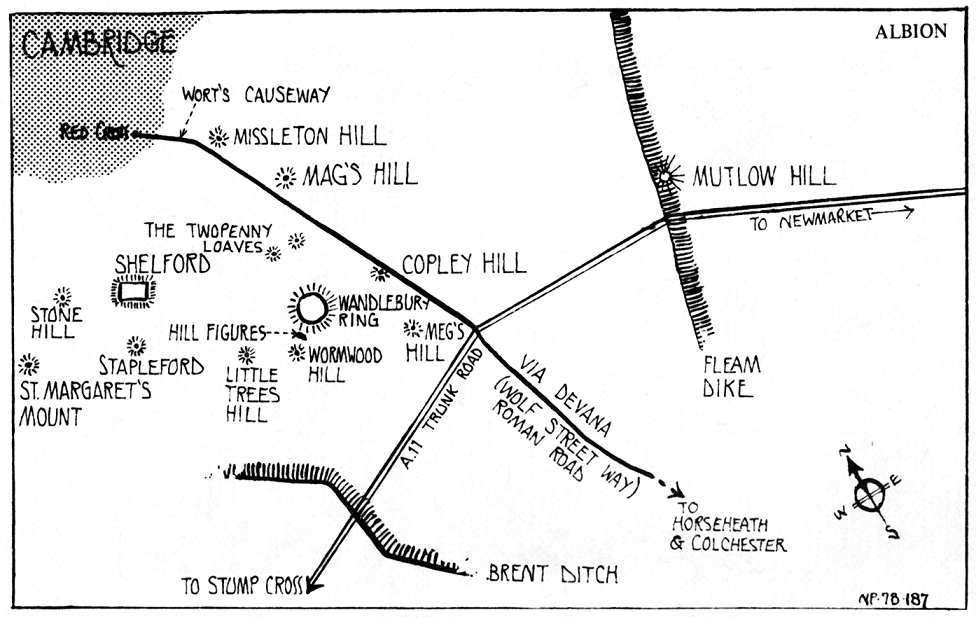
Geomantic features in the vicinity of Wandlebury
Lethbridge left Cambridge under a cloud. His opponents, conveniently remembering his student practical jokes of many years before, continued to vilify his name despite the many years of exemplary archaeology which he had carried out previously. His researches after his departure from Cambridge are well-known, and calculated to enrage those entrenched pundits of materialism who reside in the marble halls of Downing Street, Cambridge. The denizens of orthodox archaeology departments to this day believe the comments of the “experts” rather than reading the actual published works of the man himself. Like the denigration of Immanuel Velikovsky, whose cosmological theories received the butt of the astronomical establishment’s wrath, or Alfred Watkins whose ley line theories are yet unacceptable to the establishment, Lethbridge’s very name is sufficient to arouses whole complex of reactions – a sad thing to relate in a field of human endeavour which is supposed to be free of bias.
After Lethbridge’s departure, the Cambridge Preservation Society do not seem to have been at all interested in the figures. Maps at Wandlebury refer to the site not as the Gogmagog figures but as ‘Lethbridge’s Diggings’, an insulting term to say the least, and again indicative of the party line towards his work. The Society once ordered that the site should be filled in, but the cost of soil and its transport prevented this last indignity, so the excavation was left open to the four winds, the rain, unknowing visitors and children.
In 1969, Andrew Munro, who had carried on a correspondence with Lethbridge, attempted to set up a group to preserve what was left of the excavation. Saplings had grown on parts of the ground where Lethbridge had found the effigies of Gog and Wandil, and the excavated effigy of Magog had badly deteriorated, even by then. Members of the International Situationists visited the site and clandestinely destroyed many of the saplings and preliminarily scoured the figure. Munro wrote: “The only truly scientific course of action would have been to have preserved the whole hillside until such time as the whole question could be re-examined, for example by excavating one of the other two figures. Now, one of them is lost and the other is threatened. The Goddess’s face was recently recut and the Figure generally cleaned up. The mouth has already disappeared – probably due to people walking on the outlines.” That was in 1970 – nine years ago.
Visitors to Wandlebury have often been in touch with us at the Institute of Geomantic Research and have registered their sorrow and incredulity that such a major discovery should have been treated in such a shabby manner. There is even a rumour which fortunately is untrue (see photos) that a car-park has been constructed upon the site of the figures. It even has currency in the U.S.A., and is an indication of the general esteem in which the present owners are held in antiquarian circles. The figure which {8}{Photos}{9} was excavated has not been carparked nor has it been filled in, but the toll of being unfenced and unmarked, and of course (excepting the Situationists’ foray) unscoured, has led to the virtual disappearance of the effigy.
The I.G.R., feeling that the time was ripe to do something positive about this sorry mess, approached the Warden and Scretary of the Cambridge Preservation Society with an offer to scour the excavated figure. On February 19th 1978, an I.G.R. factfinding team composed of Prudence Jones, Michael Behrend and Nigel Pennick visited Wandlebury and met the Warden, Bill Clark, the Secretary, Sylvia Beamon, and the Cambridgeshire County Archaeological Officer, Alison Taylor. The team was assured that a scouring could be arranged, so long as no actual digging on untouched sites was undertaken. As the I.G.R. is not engaged in archaeological excavation work anyway, the provision was agreed upon.
Preliminary work began on getting together a team of workers to scour the figure, and provisional dates for the scouring ware drawn up. Then on the 15th of March 1978, a phone call to the author informed the I.G.R. that we were not, after all, to be permitted to clean up poor old Magog from her overgrown state unless a ‘resistivity survey’ (which had not then even been set up) showed ‘positive results’. Such a survey had been suggested to be run in parallel with the scouring. Now a “considerable feeling … against any action being taken including cleaning” was the official line of the committee. Even the suggestion of a fence to protect the site and a notice explaining Lethbridge’s work was palmed off. The state of the figure may be gauged from the photograph taken at the time of the I.G.R. inspection – and that was a year ago.
It was stipulated that the resistivity survey (and a similar scan with a magnetometer) should be carried out by an ‘unbiased party’ – Cambridge University Archaeology and Anthropology Department – the very place Lethbridge had been hounded from a quarter century earlier! Mrs Beamon did actually get a survey carried out, but the results are still not available, partly because of a car accident in which Mrs Beamon’s neck was seriously injured, which put her out of action for several months. However, such a study must be seen in terms of a smokescreen, as no resistivity or magnetometer studies have been carried out on hill figure sites, thus making comparison impossible. A profile, just like that made by Lethbridge’s steel bar, will be revealed by a technological ‘fix’, which will leave us none the wiser. The only other hill figure to be reconstructed after its destruction has been the Red Horse at Tysoe in Warwickshire, which was recovered by Graham Miller and Kenneth Carrdus who used a series of photographs taken from the air and from the ground. No electronic methods have ever been successful, and it would he instructive if they were tried at Tysoe for comparison. The author was able to see the Wandlebury figure from the air on October 27th 1978 (see photograph), by courtesy of Paul Devereux of the Ley Hunter magazine. It is still quite visible, but seeing it from the air makes one realize just how close that vegetation has crept. It has now been, since the resistivity study, covered by a crisscross of strings, which serves to keep off all but the most curious visitor. There is still no fence, and there is still neither notice nor literature concerning this great British Antiquity.
Thus we find the figures today overgrown and neglected – an embarrassment to the preservation society which wishes to be rid of them. Their non-Christian origin means that a Christian establishment will not take care of them, again, they are a reminder of Britain’s Pagan tradition, something which the Church, even today, wants to eradicate (hence the recent spate of TV and radio appearances of Petitpierre denouncing ‘witchcraft’, ‘ley lines’ etc.). However,we live in a relatively free country, and the study of ancient matters is not controlled by the orthodox – they just have the public money to spend on their own projects. The feeling of desperation which led the Cambridge Chapter of the International Situationists to chop down young trees and rip up grass on the chalk back in ’69 is still apparent today in students of geomancy and the Ancient British Mysteries. Those with a more religious interest see it as gross sacrilege – a major shrine desecrated by philistines.
The whole long saga of Gogmagog has been littered with recrimination, and I am sure that it is not yet over. It is nothing short of a major disaster that such a great discovery should be treated in such a shoddy manner by the self-appointed guardians of Britain’s heritage, but it is, sadly, no more than we have come to expect.
{10}{Adverts} {11}{Blank} {12}
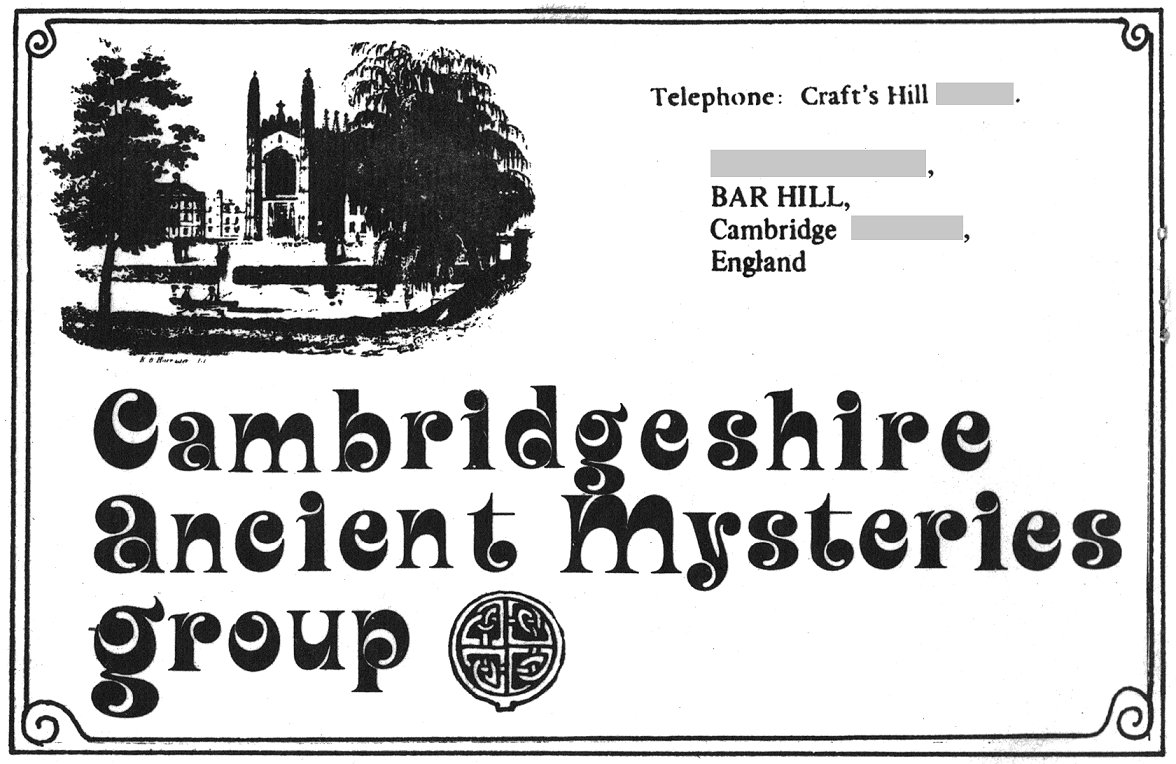
The CAMG and the IGR no longer exist (May 2019)
The Cambridgeshire Ancient Mysteries Group was set up in April 1981 by the Institute of Geomantic Research to study all aspects of ancient mysteries in the new county of Cambridgeshire and its western borders (Northamptonshire, Bedfordshire and Hertfordshire). CAMG studies all aspects of ancient mysteries including ancient trackways, leys and landscape geometry, sacred geography, old boundaries, sacred geometry, orientation, mark-stones and crosses, local lore and Pagan survivals. CAMG publishes the quarterly magazine Cambridgeshire Ancient Mysteries, in which the latest activities and discoveries of CAMG are reported. The Institute of Geomantic Research which produces CAM also publishes Occasional Papers on subjects of earth mysteries interest, and Fenris-Wolf Publications. For information on CAMG activities, meetings and publications, send an SAE to the address above.
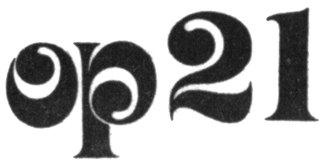
Read Otia. Same error in Lethbridge’s book Gogmagog (1957).
Dom Robert Petitpierre, exorcist, 1903–1982.